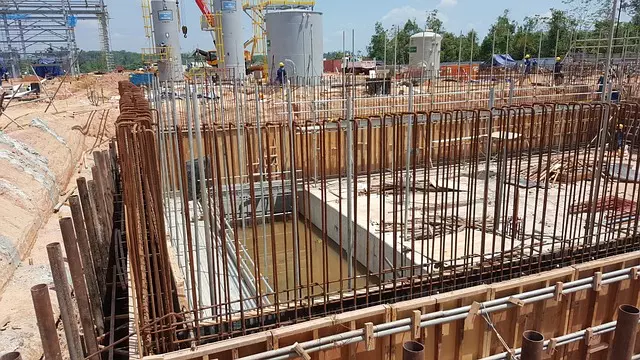Foundation cracks, from minor vertical/horizontal walls cracks to floor gaps and stuck doors, signal structural issues. Early detection through regular Foundation Inspections is key to preventing complex, costly repairs. Advanced technologies like GPR and thermal imaging ensure accurate crack severity assessment. Modern repair methods, such as epoxy injection and piering systems, offer durable solutions for enhanced structural integrity. Comprehensive inspections guide tailored repair approaches, from flexible epoxies to concrete patching compounds. Professional services provide personalized crack repair with warranties covering materials, labor, and expertise, ensuring long-term peace of mind.
“Foundation cracks can be a concerning issue, but early detection and repair are key to preserving structural integrity. This comprehensive guide delves into the world of foundation crack repair, offering insights on common causes, from settling soil to shifting water tables. We explore the crucial role of professional foundation inspection, non-invasive damage assessment techniques, and advanced technology in crack detection.
Learn about traditional repair methods and modern innovations like epoxy injection. Discover how choosing the right materials ensures longevity, and gain peace of mind with warranty considerations for a job well done.”
Understanding Foundation Cracks: Common Causes and Early Signs

Foundation cracks can be a significant concern for any homeowner, indicating potential structural issues or instability beneath the surface. These cracks often develop over time due to various factors, with some being common causes like soil settling, expansive clay soils, poor initial construction, and shifting groundwater levels. Even minor cracks can signal more severe problems ahead if left unaddressed, as they may widen and spread, compromising the integrity of the foundation.
Early detection through regular foundation inspections is key to mitigating these issues. Homeowners should be vigilant for signs like vertical or horizontal cracks in the foundation walls, floor or ceiling gaps, doors or windows that stick or swing slightly ajar, and sloping or uneven floors. Addressing cracks early can save significant costs down the line and prevent more complex repairs.
The Importance of Foundation Inspection for Crack Repair

A foundation inspection is a crucial step before, as well as after, crack repair. It’s essential to identify the root cause of cracks, which can vary from structural issues, settlement, or even tree roots infiltrating your foundation. Professional inspectors use advanced techniques and tools to thoroughly assess the integrity of your foundation, ensuring any repairs are targeted and effective. This meticulous process not only stops further damage but also provides peace of mind knowing your home’s structural stability is in good hands. By addressing foundation issues early on, you can avoid costly and complex repairs down the line, making a foundation inspection an invaluable investment.
Evaluating the Extent of Damage: Non-Invasive Methods

When it comes to foundation crack repair, the first step is a thorough evaluation of the extent of damage. Non-invasive methods play a crucial role in this process, allowing for a detailed assessment without causing further disruption or instability to the structure. Foundation inspectors employ various tools like moisture meters and ground-penetrating radar (GPR) to gauge the severity of cracks and identify any underlying issues.
Moisture meters help pinpoint sources of water intrusion, which is a common cause of foundation heave and crack formation. GPR, on the other hand, penetrates the soil to create detailed images of underground structures, enabling inspectors to assess structural integrity and plan repairs accordingly. These non-invasive techniques ensure that any repair work is targeted and effective, extending the lifespan of the foundation without unnecessary intervention.
Advanced Technology in Foundation Crack Detection

Advanced technology has transformed the way we approach foundation inspection and crack repair. Modern tools like ground-penetrating radar (GPR) and thermal imaging cameras allow for non-invasive, efficient detection of cracks and structural issues that may otherwise go unnoticed during visual inspections. These technologies provide accurate data on crack depth, width, and extent, enabling precise targeting of repair efforts.
By integrating these advanced methods into foundation inspection routines, professionals can ensure more effective and long-lasting crack repairs. This technology not only enhances the accuracy of diagnostics but also promotes cost-efficiency by minimizing unnecessary excavation or extensive repairs. It empowers homeowners and builders to take proactive measures, safeguarding their properties against potential structural damage.
Traditional Repair Techniques for Structural Integrity

In addressing foundation cracks, understanding the structural integrity of your home is paramount. Traditional repair techniques have long relied on methods like mudjacking or concrete patching to fill in gaps and stabilize the surface. However, a comprehensive solution goes beyond immediate fixing. A thorough foundation inspection is crucial to identifying the root cause—whether it’s settlement, heave, or other geological factors—for effective long-term repairs.
These conventional approaches, while quick fixes, don’t always tackle the underlying issues that led to the cracks in the first place. Modern solutions now emphasize comprehensive assessment and durable repair methods, such as epoxy injection or piering systems, which are designed to enhance structural stability and prevent future damage, ensuring a home’s safety and value for years to come.
Modern Solutions: Epoxy Injection and Other Innovative Methods

Modern solutions for foundation crack repair have advanced significantly, offering efficient and long-lasting fixes that were previously unimaginable. One such innovative method is epoxy injection, which involves injecting a mixture of epoxy resin and hardener into the cracks. This powerful compound expands and sets, filling the gap completely and providing exceptional strength. Epoxy injection is particularly effective for narrow cracks, offering a precise and targeted repair solution.
Foundation inspection plays a crucial role in determining the suitability of this method. During an inspection, professionals assess the extent of damage, identify crack patterns, and ensure proper preparation. By combining advanced inspection techniques with modern repair methods like epoxy injection, structural integrity can be restored, preventing further deterioration and ensuring longevity for any structure.
Choosing the Right Material for Longevity and Durability

When it comes to repairing foundation cracks, selecting the appropriate material is paramount for ensuring longevity and durability. A thorough foundation inspection should be conducted to determine the extent of damage and identify the best course of action. For minor cracks, a flexible epoxy or polyurethane injection may be sufficient, offering excellent bond strength while allowing some degree of movement.
For wider or more severe cracks, a more robust solution like carbon fiber reinforcement or concrete patching compounds might be necessary. These materials provide increased structural integrity, resisting further cracking and ensuring the repaired area can bear the load effectively. Choosing the right repair method and material based on the foundation inspection will contribute to a durable fix that stands the test of time.
Professional Crack Repair Services: What to Expect

When it comes to foundation crack repair, professional services offer a comprehensive solution tailored to your specific needs. The process begins with a thorough foundation inspection to assess the extent of the damage and identify any structural issues. Experts use advanced tools and techniques to detect even the subtlest cracks, ensuring no detail is overlooked. This initial step is vital for providing an accurate estimate and selecting the right repair method.
During crack repair, professionals employ various techniques, including carbon fiber wrapping, epoxy injection, or hydraulic cementing, depending on the crack’s size and type. They take measures to ensure the area is safe and secure while working, minimizing disruption to your daily life. Moreover, reputable services provide a warranty on their work, offering peace of mind and guaranteeing long-lasting results.
Warranty Considerations: Ensuring Peace of Mind After Repair

When considering foundation crack repair with a warranty, it’s essential to understand what that guarantee entails and how it can provide peace of mind after the repair is complete. A comprehensive warranty should include not just the material used for repair but also the labor and expertise involved in the process. This ensures that any issues related to the initial repair or the quality of work are covered, offering you protection against unforeseen problems that may arise over time.
During a foundation inspection, professionals will assess the extent of damage and provide recommendations tailored to your specific needs. They should also offer insights into the expected lifespan of the repair and what maintenance is required to keep it in good condition. A solid warranty acts as a safety net, assuring you that any defects or issues discovered within the covered period will be addressed promptly and without additional costs.
